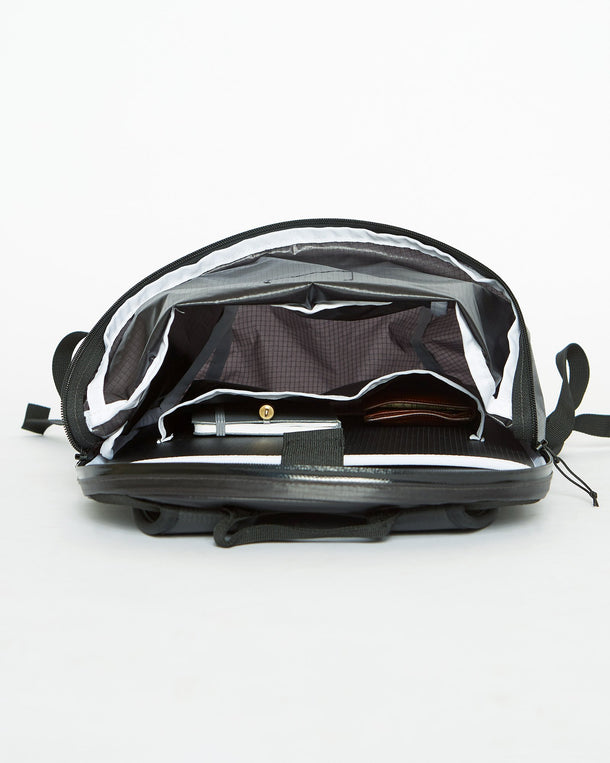In our fast-paced world, keeping your tech safe from the elements has become increasingly important. With water-resistant materials gaining popularity, it’s easier than ever to ensure your gadgets are protected while on the move. Let’s dive into the fascinating world of water-resistant materials and discover how they work to safeguard your devices.
Demystifying Water-Resistant vs. Waterproof
Many people often confuse ‘water-resistant’ with ‘waterproof,’ but these terms are not interchangeable. Water-resistant materials can withstand some exposure to water, while waterproof materials provide a higher level of protection. Knowing the difference is essential when selecting the right materials for your needs. For instance, a waterproof jacket is tested to prevent any water penetration, suitable for heavy rain, whereas a water-resistant jacket is ideal for light drizzles. Products with true waterproof capabilities are often more expensive, but they guarantee complete protection through advanced materials and technologies like GORE-TEX® membranes which prevent water ingress while allowing moisture to escape, keeping you dry and comfortable.

It’s crucial to evaluate your requirements based on your typical environments. For example, if you’re attending outdoor events or occasional hikes, typically in climates that don’t experience heavy rainfall, water-resistant materials are usually more than sufficient. However, for environments where you are likely to face heavy rains or wet conditions frequently, genuine waterproof gear, which includes not just outer fabrics but also sealed seams and zippers, becomes necessary. Consider IP ratings as these indicate the degree to which the material can resist intrusion during continuous exposure to the elements. Make conscious choices by understanding these differences to avoid any costly missteps.
How Water-Repellent Coatings Work
Water-repellent coatings are a popular choice for tech gear protection. These coatings create a barrier that prevents water molecules from penetrating the material, thus keeping your devices dry. The magic lies in the surface tension created by these coatings, which causes water to bead up and roll off. Recent advancements from MIT have introduced nontoxic waterproof coatings that offer even better performance without environmental drawbacks. Such innovations not only protect your tech but also contribute positively to our ecological footprint by reducing harmful chemical usage.
These coatings are often rejuvenated by proper care and maintenance. Regularly applying a Durable Water Repellent (DWR) treatment, which helps to restore a fabric’s initial repellency, is crucial. Easy online guides are available to help you apply these durable treatments at home with products designed for the outdoor enthusiast. By keeping their water-repellent properties intact through regular upkeep, your gadgets remain well-protected against surprise showers or splashes, ensuring peace of mind during outdoor activities.
Popular Water-Resistant Materials and Their Uses
Materials like Gore-Tex, silicone, and TPU (thermoplastic polyurethane) are commonly used in tech accessories for their water-resistant properties. Each of these materials offers unique benefits, such as breathability, flexibility, or durability, making them well-suited for different types of devices. Gore-Tex is famed for its use in outdoor apparel and accessories due to its dependable performance in heavy rain, while TPU’s versatile nature makes it ideal for lightweight cases that need to withstand frequent handling and varying temperatures.
Silicone, known for its flexibility and resilience, is often utilized in phone cases, providing ample protection without adding bulk. Moreover, advancements in modern textiles have seen the integration of synthetic fibers such as ripstop nylon, which resist tearing and stretching while maintaining a lightweight profile. This characteristic makes it a popular choice for bags and electronic cases. Explore the detailed anatomy of lightweight materials to understand how these innovative fabrics enhance your tech’s durability.
An intriguing development is seen in the use of Pertex and Polartec materials. These fabrics combine a snug fit with high-performance insulation and breathability, which, when combined with water resistance, make them perfect for both everyday gadgets and adventure gear. Each material carries its specific advantages depending on the usage environment, underscoring the importance of tailoring your selection to the conditions you’ll frequently encounter.
Choosing the Right Water-Resistant Gear for Your Tech
Selecting the appropriate water-resistant gear for your tech involves considering factors such as intended use, level of exposure to elements, and compatibility with your devices. From phone cases to laptop covers, understanding your specific needs will help you make a wise investment. For avid commuters, a water-resistant backpack may be essential, offering organized compartments and protection against unexpected weather shifts, as highlighted in our backpack benefits article.

If you’re simply looking to shield your equipment during occasional exposure to splashes or rain, lightweight cases made from TPU or silicone may suffice. However, those involved in outdoor activities where gear is subject to more rigorous conditions might prefer options that offer better protection, like covers made from ripstop nylon or those featuring a combination of water-repellent materials with extra padding for impact resistance. Determine your needs based on how and where you typically use your technology to ensure comprehensive protection.
Tips for Maintaining the Water-Resistant Property of Your Gear
To ensure long-lasting protection, it’s crucial to maintain the water-resistant properties of your gear. Regular cleaning, proper storage, and reapplication of water-repellent coatings when necessary are essential steps in preserving the effectiveness of these materials. Use mild detergents for cleaning and ensure your gear is completely dry before storage to prevent mold and mildew buildup.

Consider retreating your items periodically with DWR sprays to refresh their protective coatings. Be sure to follow guidelines specific to your gear’s material, as improper treatment can degrade water-resistance instead of enhancing it. This proactive care routine not only preserves your tech gear but also ensures you maximize the return on your investments over time, ultimately contributing to an extended lifespan and fewer costs associated with upkeep.







